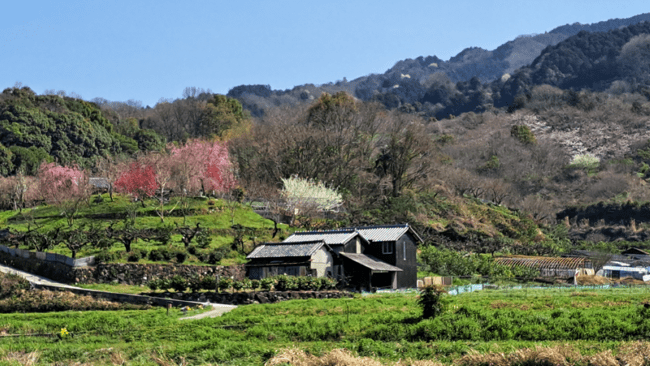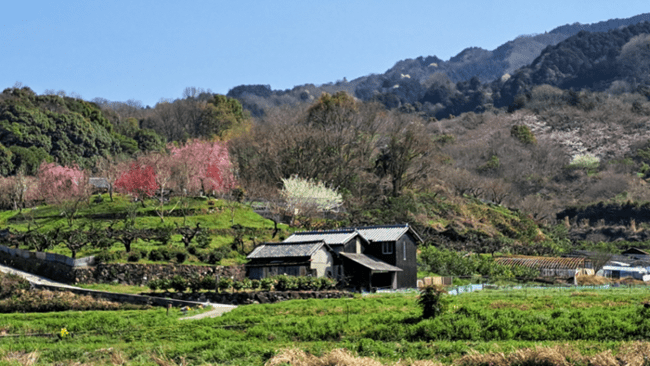
Hi! Hello! Intern #171, Patrick here! During the week at Obubu, we were busy either framming, leading tea tours, or leveling. On the weekends, all bets were off. We interns had easy access to some of the most amazing cities in Japan: Osaka, Nara, and Kyoto. If you were feeling extra spicy, you could make it to Nagoya or Shizouka. But where I really wanted to go during the breaks, were the kodos of Japan. A kodo is essentially an old road in Japan, a road that in historical times was used, but in modern times has transitioned more into these hiking trails. They also may be called kaidos, michis, and probably other things as well.
In my typical fashion, we’re going immediately talk about a non historical kodo. The last time I was an intern, I discovered the Yamashiro Kodo, and the idea of Kodos in general, the second to last week. With no time to do it, I filed it away in my future plan list. Fast forward to this internship, the Yamashiro Kodo was the very first thing I did. Well, the first thing I tried to do. In total, the length is around 25km, but being incredibly jet lagged, I mapped a shorter route between Nagaike and Tamamizu. I hopped on a train and got off at Nagaike and was immediately lost.
There is a fantastic app called 山背古道 that details points of interests along the route and the route itself. At least, thats what I thought. I left the train station, and spent the next…fifteen? minutes looking for the route. There are markers along the road marking the kodo, you just have to find them first. And that’s the trick. But eventually I found them, began my walk, and…just completely got lost over and over again. Lovely towns to get lost in. Plenty of farmlands to walk along a bubbling brook for ten minutes before realising you’re going the wrong way, beautiful shrines to walk through. Then walk through again. And then walk around several times trying to find the markers once again.

I did, however, reach my main objective: The Aodani Bairin Plum Grove. A gigantic grove of plum trees, surprisingly enough, that just two weeks earlier had a plum festival. Sadly, I was not in Japan at the time, but close enough. The plum trees were in blossom and beautiful.
But after Aodani Bairin Plum Grove, and numerous wrong turns, I headed towards the nearest train station, accompanied by a very nice man, who was really confident I could speak Japanese. I cannot.
Arriving at the train station, I witnessed a large group in hiking gear, carrying physical maps of the Yamashiro Kodo in exact detail. Perhaps I should have asked at the visitor center.
Not one to be put off by what could be described as a failure with the Yamashiro Kodo, I set my eyes next on the Yamanobe-no-Michi. After a week full of tea tours and field trimming at Obubu, I went off to Tenri, the start of the Yamanobe-no-Michi.
Ah, the Yamanobe-no-Michi, so nice, I did it twice. I did it one weekend. And then immediately did it again the next week, but with interns and assistant managers of Obubu. The first time was right before the sakura blossoms were in full bloom, and the next time, they were spectacular.
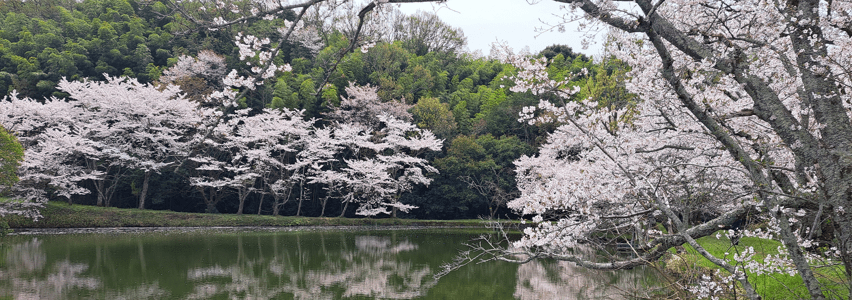
The Yamanobe-no-Michi is a section of the Tokai Nature Trail, that runs between the cities of Tenri and Sakurai, though we ended at Omiwa Jinja in Miwa. Yamanobe-no-Michi starts at Isonokame Jinja. When I say this shrine was full of roosters, I need stress, this shrine was full of roosters.
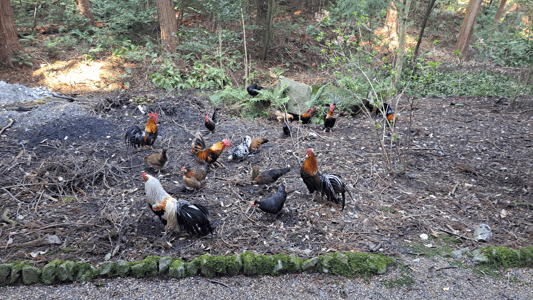
From there, the road just travelled through the countryside, by citrus groves, farm stands, shrines and temples. And Sakura trees. Lots and lots of Sakura trees.
Not only were there just Sakura trees out the wazoo, the road incredibly empty. There are not crowds and crowds surrounding the trees as one would find in city, but rather it was a fairly solitary experience. You could take photos of the trees without dozens of other people in the photos. Do not take this as a “100 Best Places to view Cherry Blossoms that no one knows about”. Rather, I just want to say, there are cherry blossoms everywhere. Enjoy Japan during Sakura season, you’ll probably come across cherry blossoms regardless.
One of the highlights of the Yamanobe-no-Michi, the second time around, following a sign for “Matcha”. It led us to a house with an absolutely beautiful garden. Inside, we met the most lovely lady who took us to a tea ceremony room within the house were she served matcha and yokan, a japanese sweet. Anyone walking the trail, I highly recommend this spot. However, the name and location is unclear. You’ll simply have to be on the look out for a sign saying “Matcha”.

With harvest quickly approaching, I had to get one more kodo, or kaido in this case, under my belt, before I was too tired to hike 30km. Lastly, I went to the Yagyu Kaido.
The Yagyu Kaido starts near Kasuga Taisha in Nara, and ends in Kasagi, Kyoto. In fact, it is made up of three different courses, the Takisaka-no-Michi, the Kengo-no-Michi, and the Yagyu-Kasagi-no-Michi. Without question, I absolutely recommend the Takisaka-no-Michi section. And the Takisaka-no-Michi section alone.
The Takisaka-no-Michi rambles through the Mt. Kasuga Primeval Forest along streams where cherry blossoms filter in through the canopy. At the forest exit, there is a tea shop and cafe that’s probably nice, but as per usual, I arrived before it opened. Followed up by a vast expanse of rice fields, more forests, and finally, it ends at Enjo-ji Temple. A lovely hike.
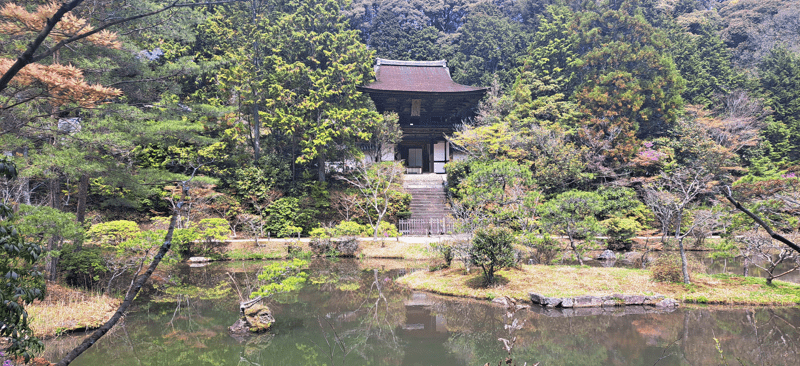
The Kengo-no-Michi is also a lovely hike along the outskirts of small villages. A downright enjoyable time. Until Kaeribasa-toge Pass. Kaeribasa-toge Pass is where any friends that came along for the ride will stop talking to you and get on the next bus home. A straight up mountain trail. Forever. I am still hiking it as I write.
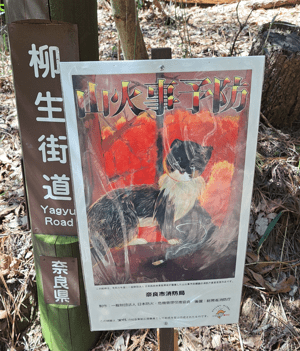
By the time I finished the Kengo-no-Michi, and begun the Yagyu-Kasagi-no-Michi, I was dead. However, the journey home by bus from Yagyu ran close to four hours, while finishing in Kasagi would be an hour home. Finishing was a struggle, but Kasagi-dera Temple area had some pretty views of Kasagi. The train was departing the station as I arrived, so I was able views of the Kizu River on the scorching hot day.
Please enjoy forest fire sign with a weasel that is sad that it dropped it’s cigarette and started a forest fire. Remember to not start forest fires.
This three trails are not the only ones in Japan or even the Nara Prefecture. Also in Nara there is the Katsuragi Kodo, a hiking course I had planned on going, but time did not permit. In the Yoshino region, there is the Kumano Kodo, a famous trail with many different branches. Even in the process of writing this article, I found out about even more of these historical trails. Trails for next time.

